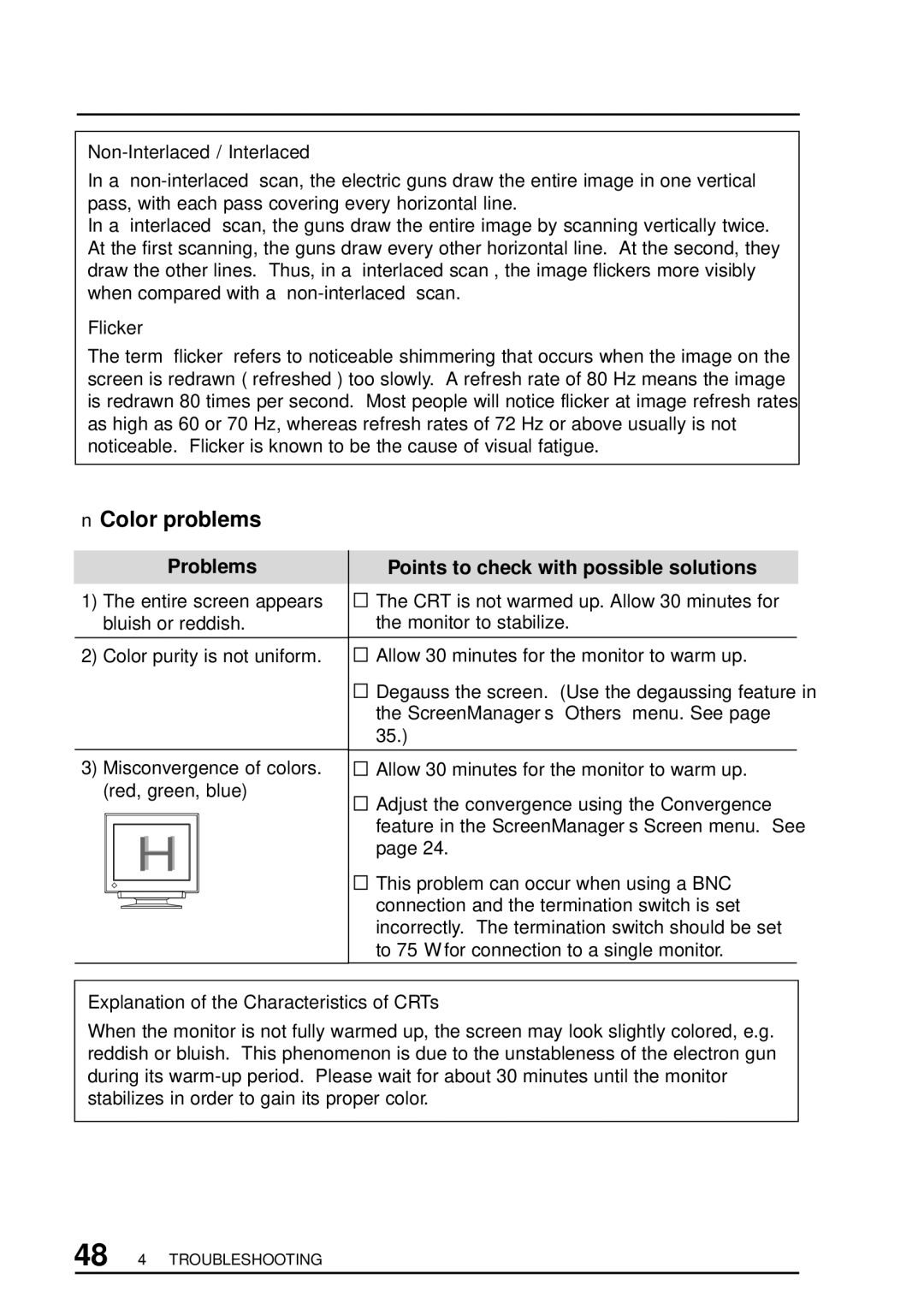
Non-Interlaced / Interlaced
In a
In a “interlaced” scan, the guns draw the entire image by scanning vertically twice. At the first scanning, the guns draw every other horizontal line. At the second, they draw the other lines. Thus, in a “interlaced scan”, the image flickers more visibly when compared with a
Flicker
The term “flicker” refers to noticeable shimmering that occurs when the image on the screen is redrawn (“refreshed”) too slowly. A refresh rate of 80 Hz means the image is redrawn 80 times per second. Most people will notice flicker at image refresh rates as high as 60 or 70 Hz, whereas refresh rates of 72 Hz or above usually is not noticeable. Flicker is known to be the cause of visual fatigue.
nColor problems
|
| Problems | Points to check with possible solutions | ||
1) The entire screen appears | The CRT is not warmed up. Allow 30 minutes for | ||||
bluish or reddish. | the monitor to stabilize. | ||||
|
|
| |||
2) Color purity is not uniform. | Allow 30 minutes for the monitor to warm up. | ||||
|
|
|
|
| Degauss the screen. (Use the degaussing feature in |
|
|
|
|
| the ScreenManager’s “Others” menu. See page |
|
|
|
|
| 35.) |
|
|
| |||
3) Misconvergence of colors. | Allow 30 minutes for the monitor to warm up. | ||||
(red, green, blue) | Adjust the convergence using the Convergence | ||||
|
|
|
|
| |
|
|
|
|
| feature in the ScreenManager’s Screen menu. See |
|
|
|
|
| |
|
|
|
|
| page 24. |
|
|
|
|
| This problem can occur when using a BNC |
|
|
|
|
| |
|
|
|
|
| connection and the termination switch is set |
|
|
|
|
| incorrectly. The termination switch should be set |
|
|
|
|
| to 75 Ω for connection to a single monitor. |
Explanation of the Characteristics of CRTs
When the monitor is not fully warmed up, the screen may look slightly colored, e.g. reddish or bluish. This phenomenon is due to the unstableness of the electron gun during its
48 4 TROUBLESHOOTING
